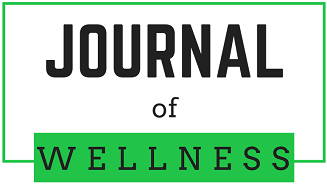
Funder
The author(s) received no specific funding for this work
Conflict of Interest
The author(s) have no conflict of interest to declare for this work
Abstract
Introduction: Burnout is a major risk in healthcare professions and is a significant contributor to the current nursing shortage. Strategies to combat burnout of healthcare professionals are in desperate need. The purpose of this project is to introduce the clinical peer supervision model as a method to alleviate burnout in nursing professionals.
Approach: Eight nurses from in-patient settings participated in a peer-supervision support group, modeled after existing European nursing and mental health provider-support protocols. To assess the effect of this intervention, qualitative data analysis was conducted on the transcripts of session and the results described. All participants reported statistically high levels of dissatisfaction at work (M= 30.75, SD = 7.57, p < 0.001) prior to the group study implementation. The transcripts of the subsequent group sessions were coded using a multi-phase coding scheme, generating themes related to Maslach’s burnout typology. The first-round coding resulted in 93 initial codes, which were further organized into 17 thematic categories, which were synthesized into five broad themes. Three of these themes deductively corresponded to Maslach’s theoretical concepts (emotional exhaustion, depersonalization, and personal accomplishment), the remaining two themes were summarized as ‘administrative stressors’ and ‘professional survival tactics’. Administrative decision making, depersonalization, and emotional exhaustion were noted as predominant causes for work-related stress and burnout. However, the participants valued the peer support group and were eager to continue meeting for peer-supervision.
Discussion: The peer support of the group showed promise in the relief of stress related to their helping profession. The clinical peer supervision model is frequently utilized in the United Kingdom and Europe, but rarely utilized in the United States. Based on these results, the authors recommend consideration for trial implementation of similar protocols by American nursing professionals as a mitigation to burnout.
DOI
10.55504/2578-9333.1158
Recommended Citation
Gamache, Kyle; Gamache, Sarah; and Robillard, Joseph
(2023)
"Peer-Supervision of Nursing Professionals: A Shield Against Burnout,"
Journal of Wellness: Vol. 4
:
Iss.
2
, Article 9.
DOI: https://doi.org/10.55504/2578-9333.1158
Available at:
https://ir.library.louisville.edu/jwellness/vol4/iss2/9
Included in
Bioethics and Medical Ethics Commons, Clinical Psychology Commons, Counseling Commons, Counseling Psychology Commons, Health Law and Policy Commons, Health Psychology Commons, Human Factors Psychology Commons, Medical Humanities Commons, Nursing Administration Commons, Other Psychology Commons, Physiology Commons, Psychiatric and Mental Health Commons, Public Health Commons, Public Health and Community Nursing Commons
